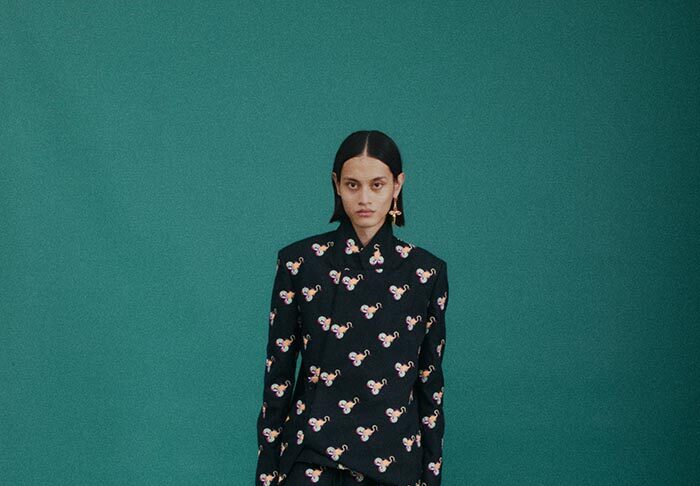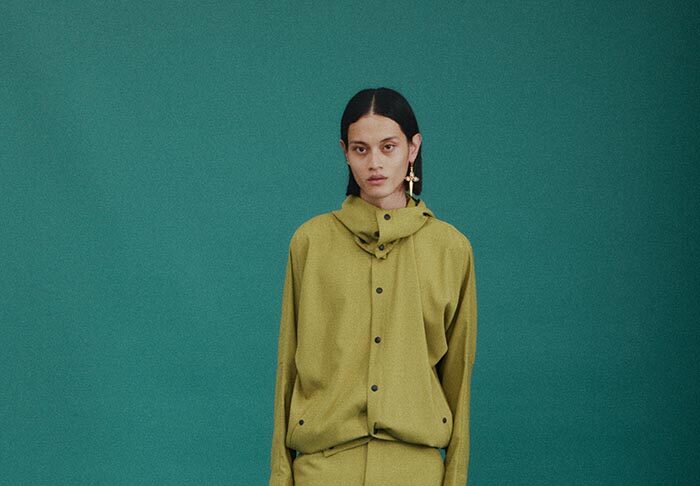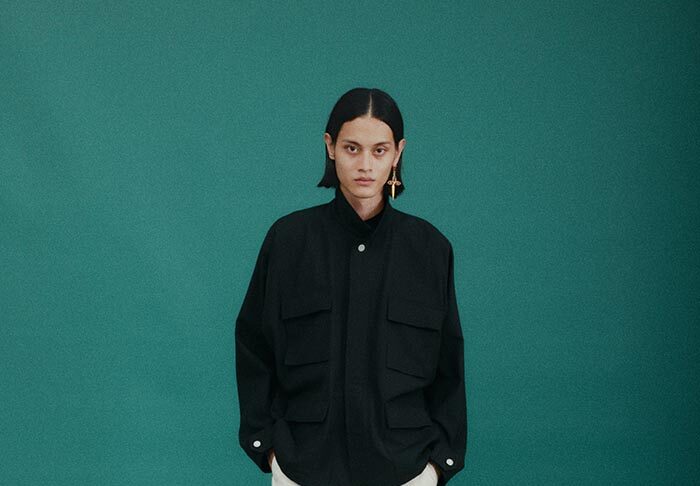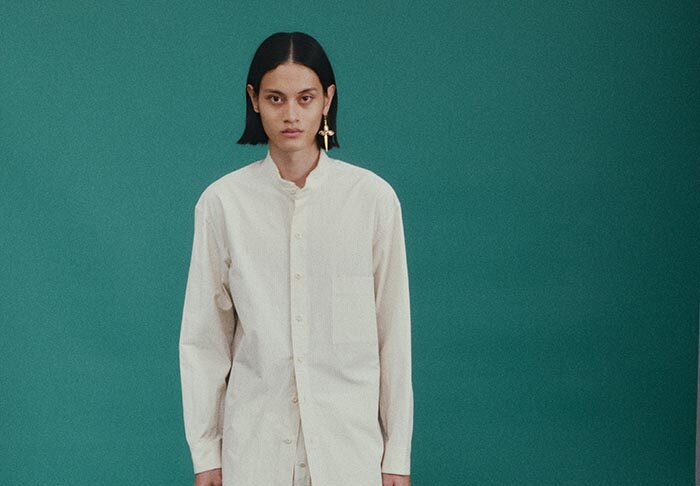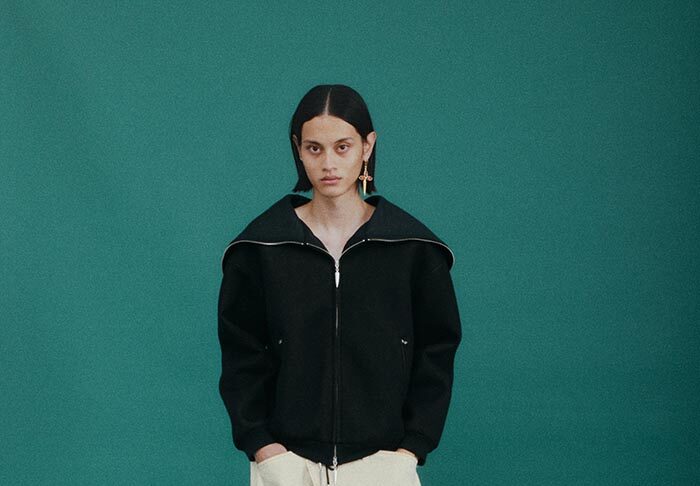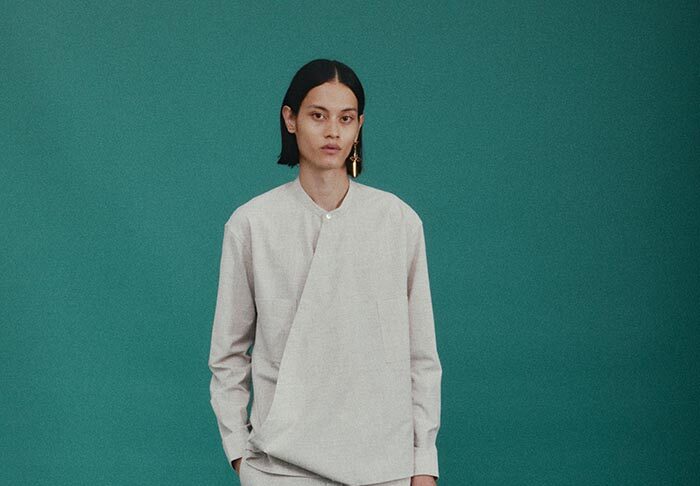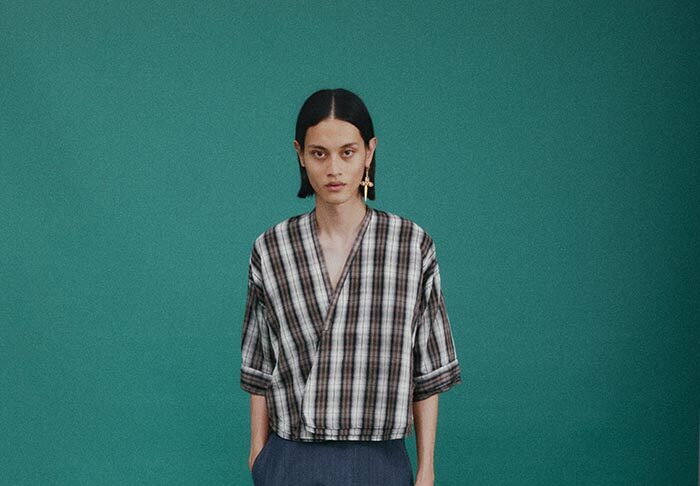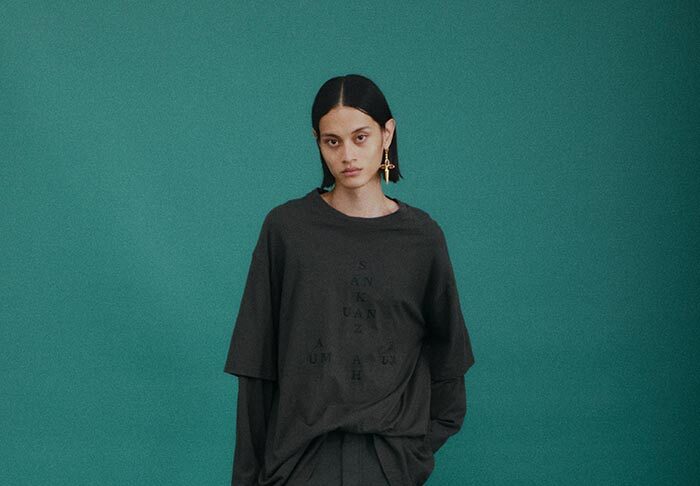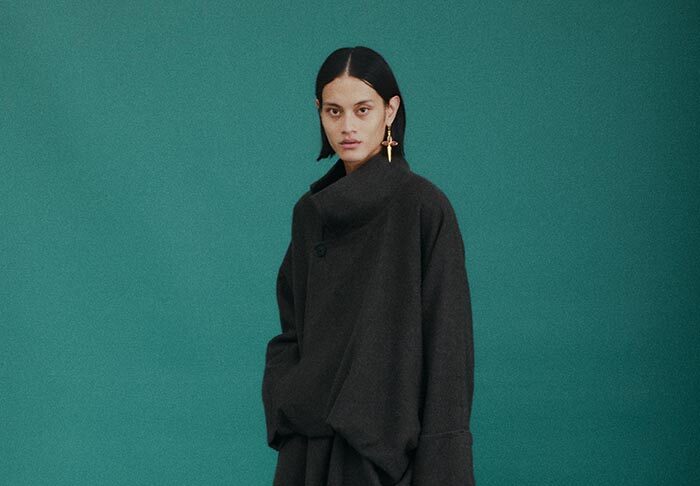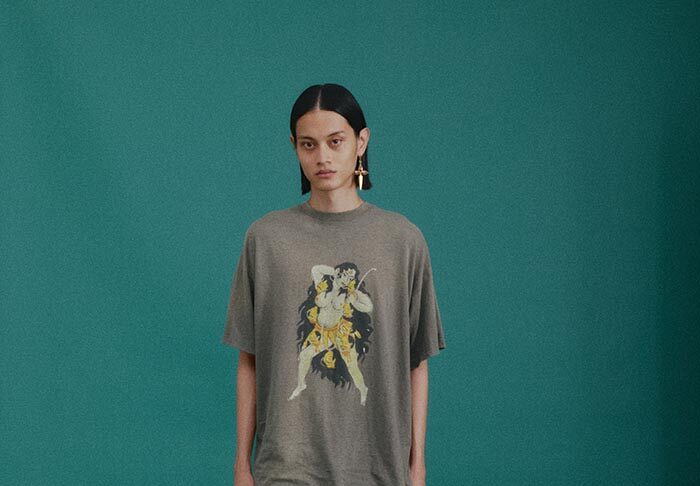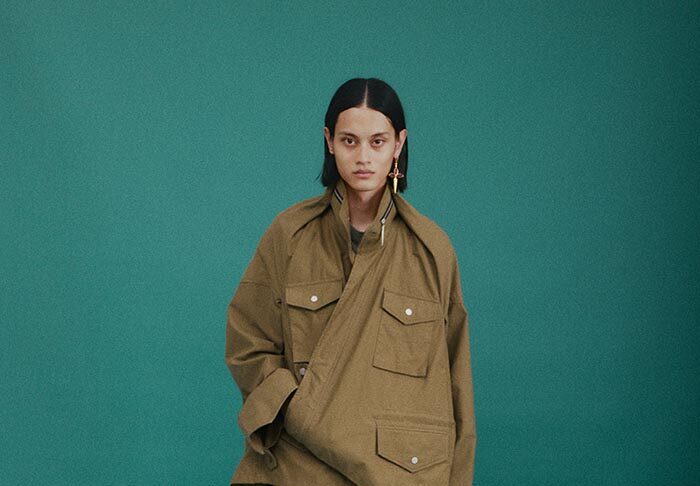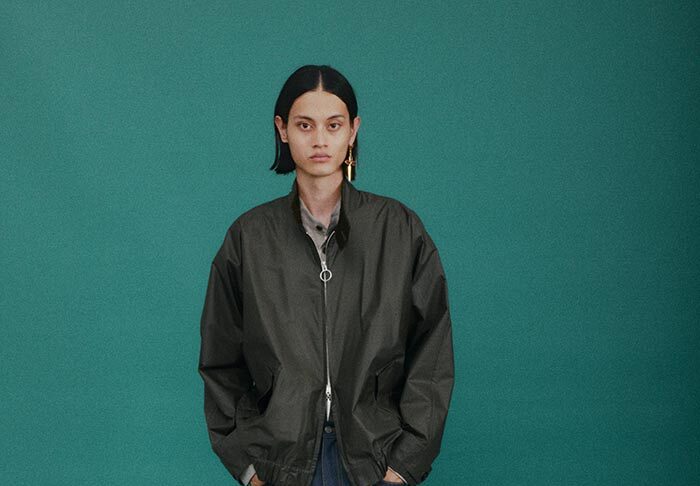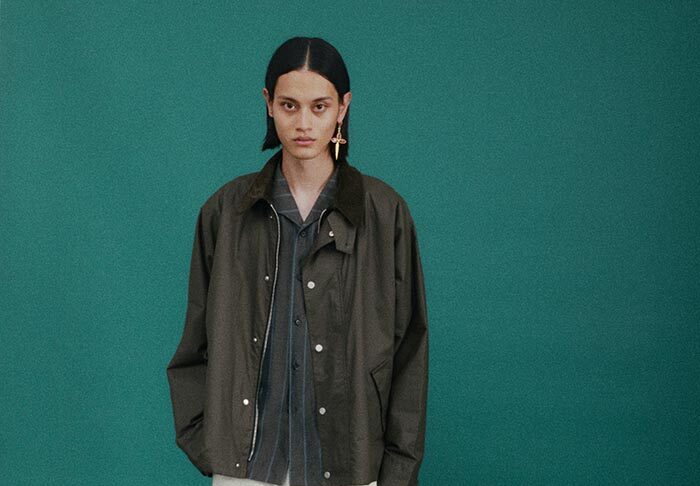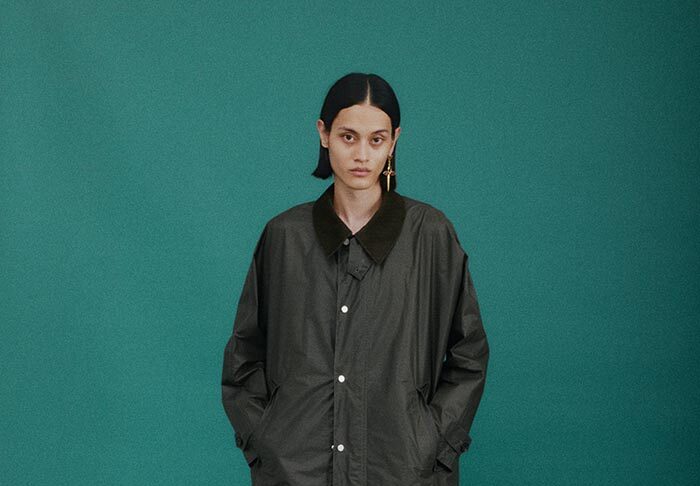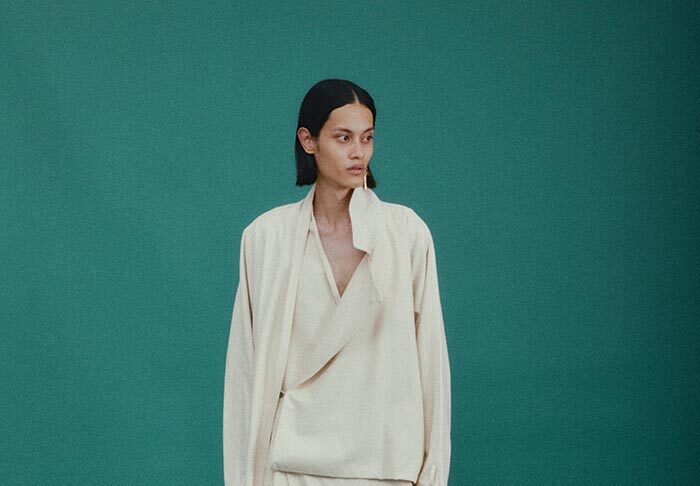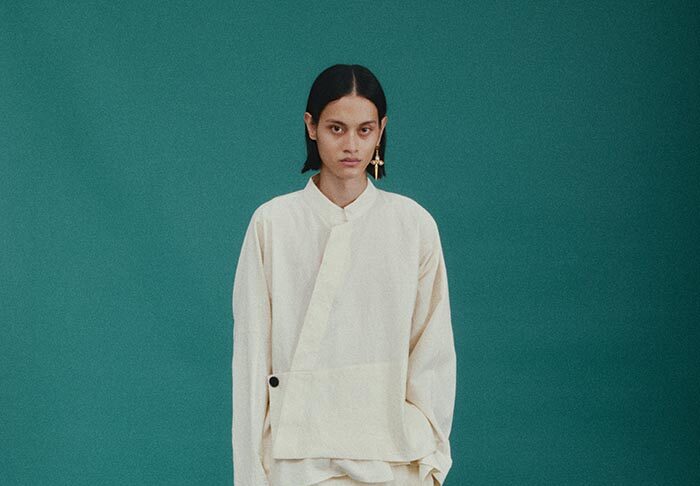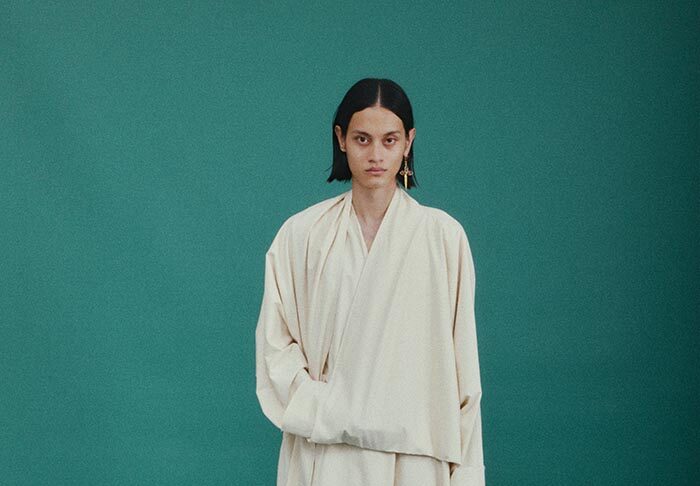Inspiration: Tara
For the Spring/Summer 2026 collection, SANKUANZ continues its exploration of Himalayan spiritual traditions, turning to Tara, a central deity in Tibetan Buddhism. Her dual nature—both transcendent and grounded—echoes the brand’s enduring investigation of contrast: classic and modern, high fashion and street. Interpreted through this framework, goddess iconography becomes a living visual language, recontextualized for the present.
SILHOUETTE: CULTURAL CONVERGENCE
SANKUANZ maintains its dialogue between traditional Himalayan attire and contemporary fashion, while shifting from the exaggerated silhouettes of past seasons. This collection returns to the rhythms of daily life with a more grounded, practical fit.
TAILORING: HIMALAYAN TRADITION,MODERN EXPRESSION
The collection deepens SANKUANZ’s engagement with Himalayan dress through a focused study of form. Coats revisit the draped construction and side-fastened wrap of Tibetan robes.
The classic suit jacket discards the conventional lapel, replacing it with a flat, uninterrupted cut that traces the curve of a shawl collar. Elements of Chinese tailoring are integrated into streetwear essentials, from waxed jackets to coach and bomber styles, merging ceremonial structure with utilitarian ease. Trousers combine the visual cues of short skirts and long pants, subtly challenging familiar proportions and conventions of gendered dress.
Sankuanz
YAK CASHMERE: REWORKING THE PLATEAU
Yak wool, a material native to the Himalayan highlands, takes centre stage this season. The fabric of fine yarn is shaped into garments suited for both formality and ease: coats, shirts, jackets and tailored suits. Rendered in earthy tones—light brown, dark grey, cream—the fabric’s natural depth is emphasized by flat, unembellished cuts inspired by East Asian tailoring. The result is a quiet, tactile echo of the snowy plateau—woven into everyday life with presence and restraint.
ACCESSORIES: THE DAGGER,RECAST
The dagger motif, a recurring emblem in the SANKUANZ universe, appears across both garments and accessories with renewed intricacy. The Eye of Dakini—composed of three horse-eye stones forming the hilt of a dagger—returns with subtle variations in shape and tone, adding contrast and edge. Dagger elements carry into footwear and belts, while additional accessories draw from Himalayan symbolism: prayer bead necklaces, handwoven keychains inspired by Tibetan scorpion amulets, grounding the collection’s spiritual core in objects of modern wear.
EXHIBITION: THE STILL MANDALAS
The collection is staged as a static installation at the Institut du Monde Arabe in Paris, where inspiration is drawn from the intricate geometry and spiritual symbolism of Tibetan sand mandalas.
Traditionally centred on a square temple with four gates and surrounded by concentric circles, mandalas reflect a vision of the cosmos ordered through ritual geometry. In this reinterpretation, coloured rubber granules stand in for naturally dyed stone dust, forming three distinct mandala-inspired shapes laid across the space in deliberate formation. These compositions resonate with the building’s signature lattice windows, whose geometric Arabic patterns subtly echo the mandala’s symbolic symmetry. The resulting atmosphere is contemplative and quiet—an intersection of sacred design systems where architectural and spiritual languages meet.
##



